Some of the best hiking shoes out there just got better: Altra Lone Peak 8 review
Content is created by CNN Underscored’s team of editors who work independently from the CNN newsroom. When you buy through links on our site, CNN and its syndication partners may earn a commission. Learn more
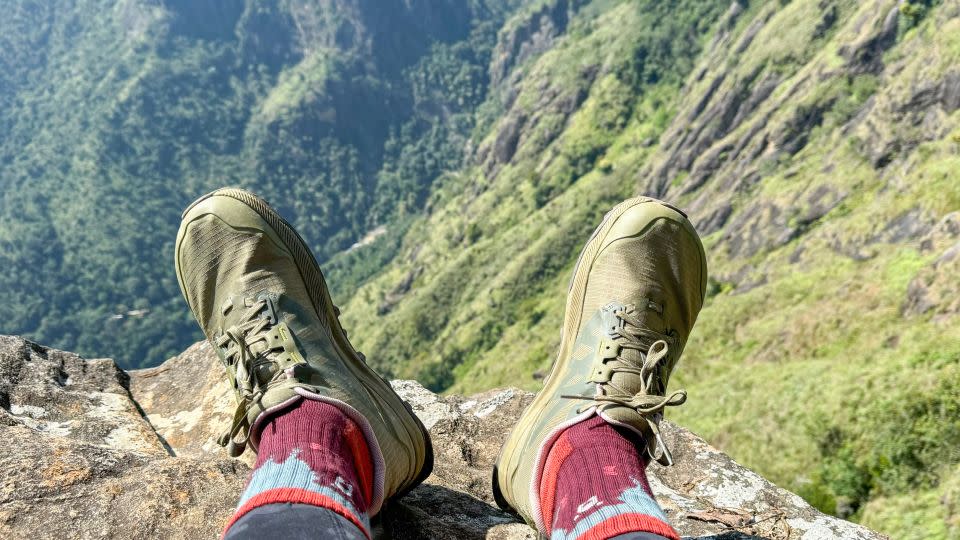
Gone are the days when heavy hiking boots were the only option to accompany you on the trails, whether or not you actually needed the weight, structure and rigidity that accompanied them. These days, the hiking community is shifting away from the clunky, bulky grandpa boots of yore and moving toward trail running shoes, which are light and flexible yet sufficiently supportive for long-haul hikes.
For years, Altra Running has been leading the charge, churning out numerous styles of zero-drop sneakers featuring the brand’s proprietary wide toe box, dubbed FootShape. Altra’s flagship model, the Lone Peak, has a near cult-like following, and a few years ago, I became an enthusiastic member.
So when I got word about the brand new Altra Lone Peak 8s, I knew I had to try them. I got a pair myself and wore them for 8 weeks around town, on casual hikes and even on a trip to Sri Lanka. Here’s what I think.
Altra Women's Lone Peak 8
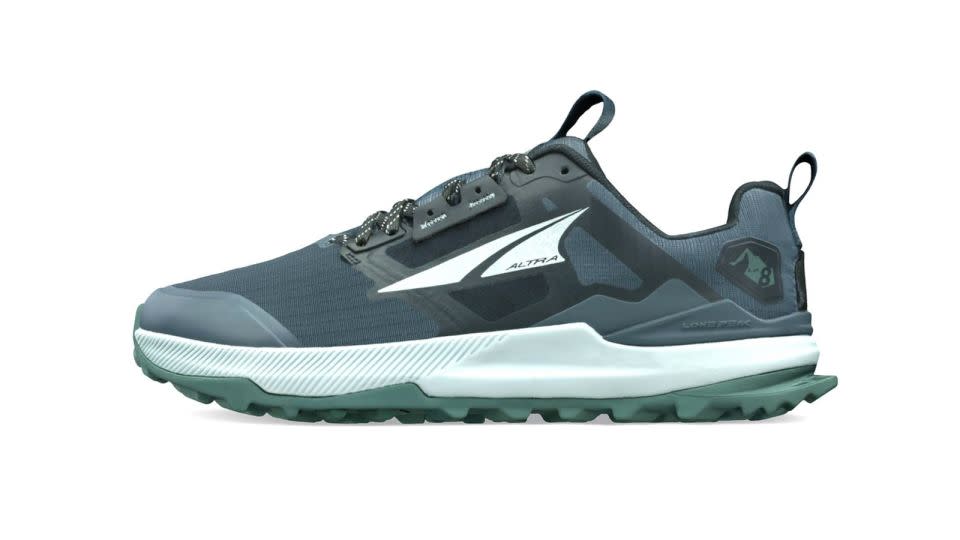
The Lone Peak 8 is the latest iteration of Altra’s uber-popular Lone Peak series. Its zero-drop design and minimal cushioning may be a surprise to newcomers, but its roomy toe box and grippy sole are something that just about any hiker can get on board with.
Altra Men's Lone Peak 8
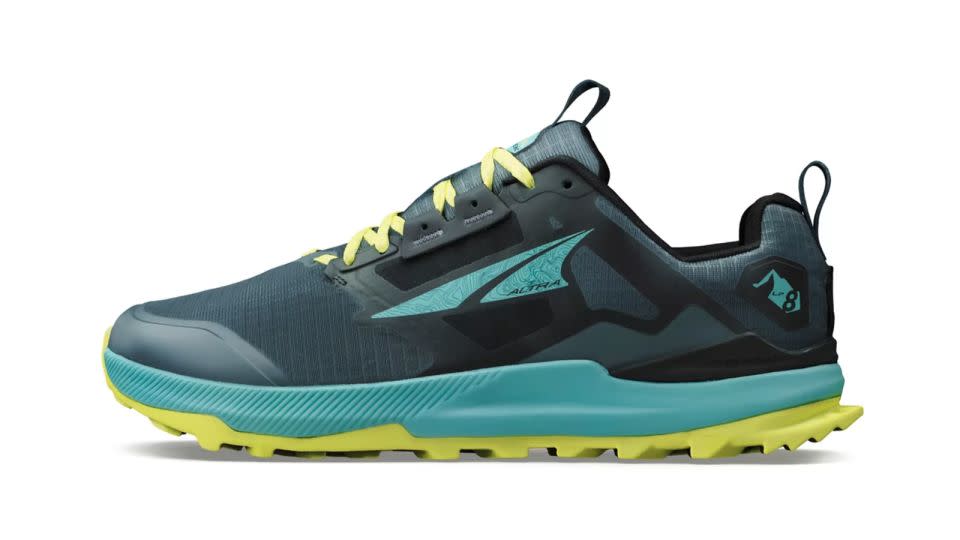
The Lone Peak 8 doesn’t differ tremendously from the previous version, the Lone Peak 7, but it is slightly lighter with a more durable upper and more secure lacing system, meaning you can go the distance while carefree and comfortable.
What we liked about them
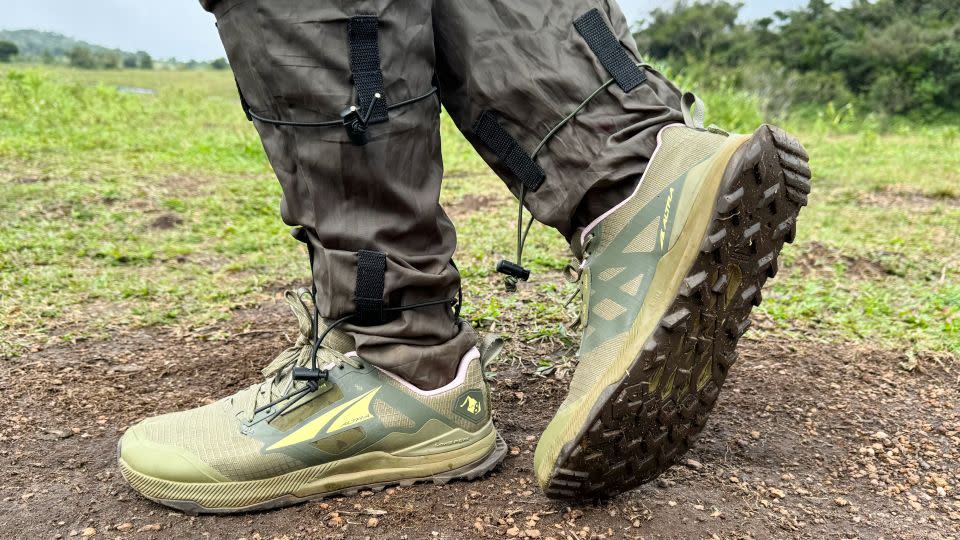
From terrific traction to a wonderfully wide toe box, the Lone Peak 8s are a trusty trail running shoe that works equally well for casual walks and extended thru-hikes alike.
Super comfortable sneakers
Just like previous versions (I own the Lone Peak 6s and 7s and still wear both pairs), the Lone Peak 8s are extraordinarily comfortable shoes. I broke them out of the box in early January and pounded the pavement in them for a week before taking them out to the trails. They made for fabulous everyday walking shoes and proved equally well-suited as hiking shoes. They accompanied me on cold, muddy and slippery winter hikes in Wisconsin and pavement walks around New York City before joining me for longer treks in Sri Lanka the following month.
One key feature of the Lone Peak series is that there is no break-in time required, as the cushy soles and wide toe box are ready to go on day one. I walked about 20 miles in these shoes the first week I had them (and got in about 15 miles of proper hiking the following week), and experienced no issues with rubbing or blisters. By the time I flew to Sri Lanka, I knew the shoes fit well and were ready for longer adventures.
Great grip and terrific traction
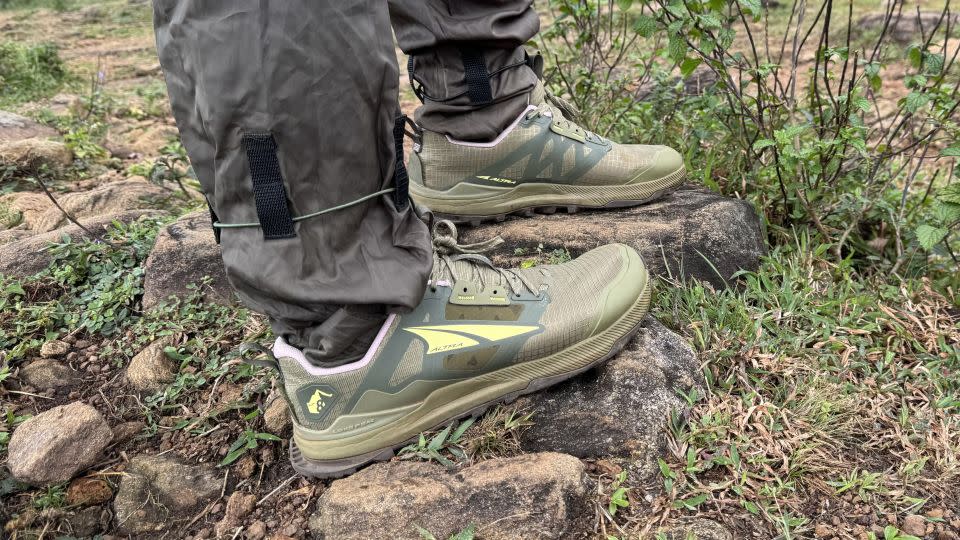
The Lone Peak 8s, which launched in January 2024, offer a lot of the same tried-and-true features of the Altra Lone Peak 7, including an upgraded MaxTrac outsole that was initially introduced on the 7. The actual compound used in Altra’s signature Trail Claw lugs was upgraded in the 7 (and still uses the same upgraded technology in the 8), offering even better traction on wet trails and slick granite. So it’s no surprise that the Lone Peak 8s performed well on dirt, leaves, rocks and mixed trails during my testing. However, I did feel myself sliding around more in thick, wet mud.
In February, I headed to Sri Lanka for a guided hiking, biking and kayaking trip, and I was hoping to avoid hauling along heavy boots because I was only going to be hiking four of the 21 days I’d be in the country. I sent a link to the shoes to my guide, who told me he believed the shoes would be sufficient for the group hikes we would do. Fantastic.
Only once did I wish I had proper hiking boots in Sri Lanka (on an especially muddy rice paddy hike during a downpour), as the Lone Peak 8s were sufficiently grippy during the rest of my treks. They got me through dozens of miles of hiking trails through rolling tea plantations, up steep forested mountain peaks and along winding routes crisscrossing over train tracks and village paths. They held their own on rocks, boulders, packed-down paths and pine needle-strewn trails, offering plenty of grip and traction to keep me going.
I also wore the shoes during 60 miles of biking through Sri Lanka’s hill country and during walking tours of various cities, temples and tea factories. The shoes were comfortable and my feet never got tired or blistered, which was especially important given how active my trip was. Because the shoes are lightweight and breathable, they also didn’t weigh me down, so even after a steep and strenuous 8-mile hike or after a sweaty, hilly 25-mile bike ride, I didn’t feel the immediate urge to take off my shoes, which is how I feel when wearing bulky boots. They’re the perfect all-around shoe, eliminating the need to pack multiple types of footwear for a single trip.
Wide toe box mimicking the shape of your foot
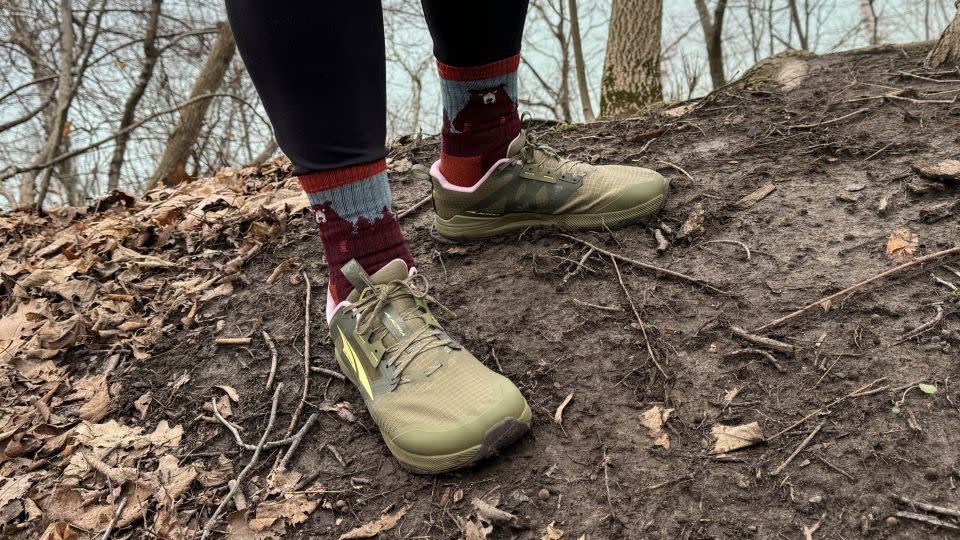
For most hikers and trail runners with wide feet, Altra is the go-to brand. However, unlike some so-called wide-width shoes, Altra doesn’t limit the wider width to just the center of the foot; rather, one of the brand’s key features is its FootShape toe box. Essentially, the front of the shoe is designed to let your toes splay out in a natural way instead of forcing them to scrunch up, as some wide-width but narrow toe box shoes do. This wider toe box is not only more comfortable, but it also improves balance and stability on the trail. While this comes in handy during quick day hikes and casual treks, you’ll really notice the difference during long-distance hikes and runs.
The Lone Peak 8 also has an updated gusset construction to offer a more generous fit by reducing the amount of material running through the midfoot. I didn’t notice any difference, but the brand notes this subtle change, and it’s possible people with narrow feet might find the more generous fit to be too generous.
Wide range of sizes
Altra is one of a handful of companies offering size-inclusive footwear that can accommodate a much wider range of hikers’ feet. While it’s not uncommon to find men’s sizing up to 13 and beyond, it can still be challenging for women to find shoes above a size 10. The Lone Peak 8s are available in men’s sizes up to a 16 (though most colors are only in stock up to a 13), and in women’s sizes up to a 12. Furthermore, both genders offer both regular and wide widths. Keep in mind that even the regular sizing is wider than the fit of most other brands and it also includes Altra’s signature extra-wide toe box.
Zero-drop and minimal cushioning
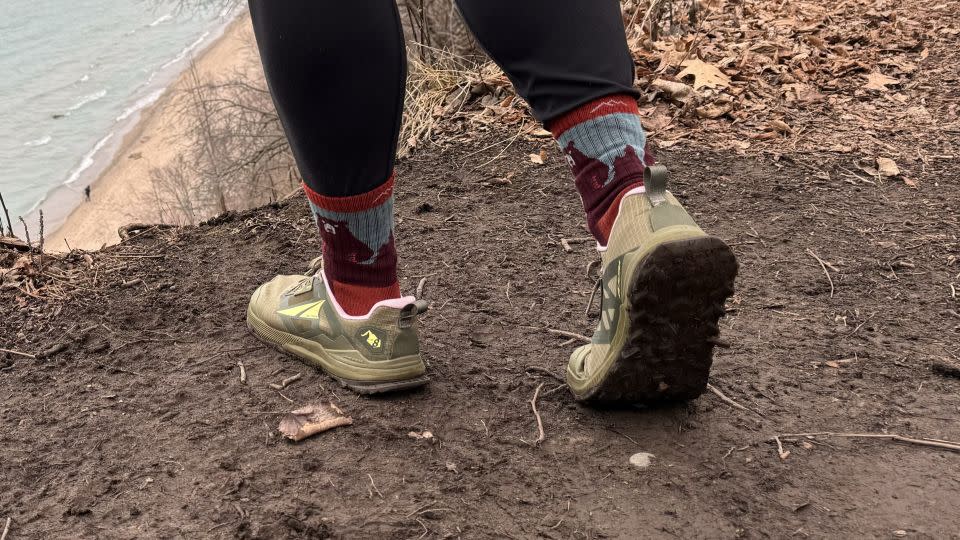
The zero-drop shoe trend is alive and kicking (er, hiking?), as more and more trekkers begin swearing by the style of shoe that Altra is well-known for. Minimal cushioning keeps the heel and forefoot on the same level, meaning runners, walkers and hikers have more control of their gait in zero-drop shoes. While this may not matter much while walking on completely flat trails, it’s essential when you’re speeding up and down steep sandstone steps or rocky mountains. This added control naturally allows you to strengthen your feet, as you’re using muscles that were previously unused in ultra-cushioned shoes. This can increase athletic performance and reduce pain, but it can also take a bit of time to get used to.
If you find your feet getting sore more quickly in minimally-cushioned shoes like these, for instance, if you’re recovering from an injury, then you may want to go with a cushier model, like Altra’s Via Olympus 2 Road Running Shoes, available for women and for men. The Olympus 2 model maintains a zero-drop structure but with added cushioning.
Customizable lacing system
An improvement initially introduced on the Lone Peak 7 was the addition of a ghillie-style lacing in the shoe’s quarter panel to provide a better fit. The change helped to keep feet secure in the shoes, thereby preventing you from slipping into blister-rubbing territory, and also eliminating the need to tie and re-tie your shoes every mile. With the Lone Peak 8s, the lacing system was further updated by punching through the ghillie lacing cage to allow for more variability in fitting.
When testing the 7s directly against the 8s (by being that person wearing one of each shoe simultaneously), I did notice that the 8s stayed tied up longer, which was great, but I still had to re-tie and double tie, particularly after scrambling on uneven terrain, which caused my feet and ankles to wiggle around more.
What we didn’t like about them
Midsole foam can break down quickly
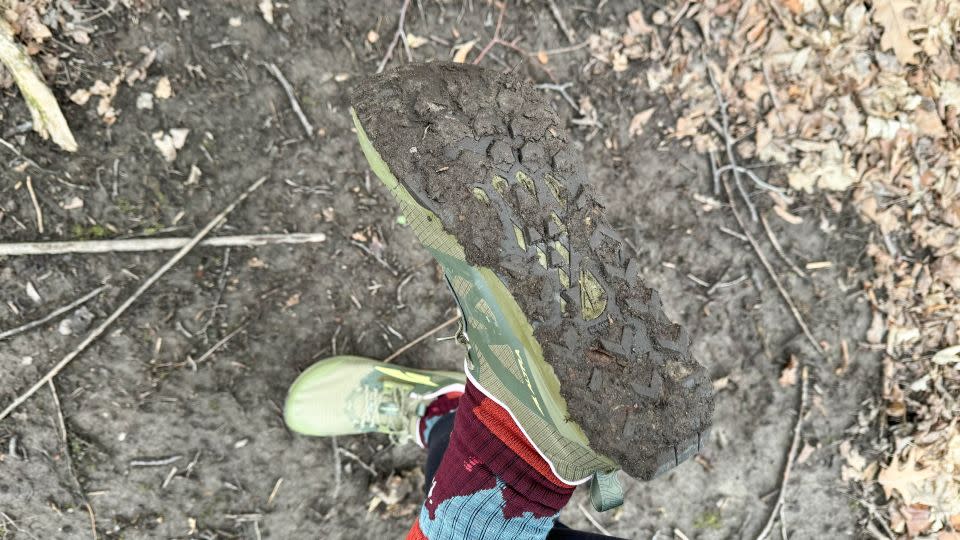
Though I haven’t noticed this issue myself, one complaint I’ve heard from others is that the medium-density Altra EGO foam that the Lone Peaks use as padding tends to wear out faster than that of other running shoes, particularly if you do a lot of downhills or wear them a lot on pavement. As this is a trail-specific shoe, it prioritizes lightweight materials, so it is understandable that the shoe might break down quicker if it’s used for heavier hikes or on sole-damaging concrete.
No neutral colors
Though this is a purely cosmetic complaint, it has perplexed me for years that Altra refuses to make more solid, neutral-colored shoes like all-black or all-gray. Instead of having numerous shoes for different purposes (walking around on concrete, day hikes, long hikes, bike rides and for travel), I tend to wear the same shoes for multiple activities. While the structure and comfort of these shoes make them fantastic for basically any activity, the wild colors they come in limit the practicality of wearing them everywhere. The Lone Peak 8s (like the 7s), don’t come in any single-color offerings and none of the base colors are something neutral like black or gray. Instead, they’re all various shades of blue and green with accents of orange, yellow and pink — colors I don’t really want accompanying most of my outfits.
You can (really) feel the ground
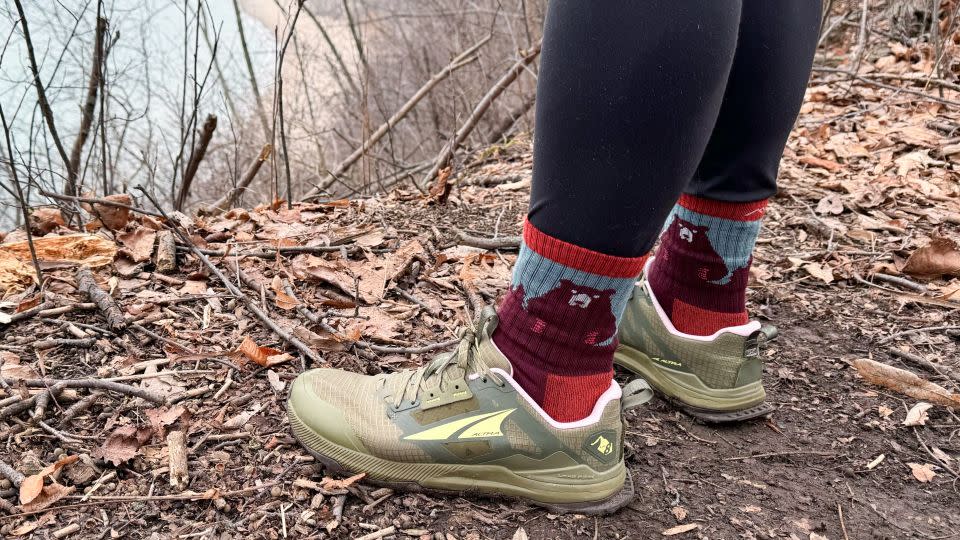
While some backpackers and runners enjoy feeling every single little rock and crevice on the trail, others don’t. This is one of the key features that has made the Lone Peak series a cult-favorite for years, but some people prefer stack height and more cushioning and you might not know if you’re one of those people until you try a minimally-cushioned, zero-drop shoe like these.
Personally, I usually enjoy feeling some rocks and sticks below my feet, as I feel more connected to the trail and the slight foot and ankle rolls accompanying barefoot-style hiking help me build up strength in my previously-neglected arches and ankles. However, if there are a ton of rocks on the trail and it’s a really long hike, I sometimes get tired of feeling so much debris, as it can get uncomfortable over time and cause more fatigue in my feet.
No waterproof option
The updated footbed on the Lone Peak 8s uses a closed-cell material (as opposed to the Lone Peak 7s’ open-celled PU material, Ortholite), meaning the foam itself does not absorb moisture or dirt. The shoe won’t get logged down with water from the ground up, but they are not waterproof and Altra does not make a waterproof version of this exact shoe.
This wasn’t a problem during cold and dry winter hikes in Wisconsin and warm and sunny hikes in Sri Lanka, but do you remember the previously mentioned downpour in a Sri Lankan rice paddy? I was wearing these shoes during that hike, and it didn’t go so well.
I do own fully waterproof hiking shoes and boots, so that feature isn’t a dealbreaker for me, but if you’re looking to invest in a single pair of hiking footwear and you regularly deal with snow or rain, then you may want to opt for another shoe. Altra does offer a water-resistant Lone Peak in the Lone Peak All-Wthr Low 2s, which have the same stack height, original Footshape, EGO midsole and Maxtrac outsole.
Improvements over the Lone Peak 7 are minimal
Technically, the Lone Peak 8 is lighter than the 7, but the difference is minimal. If you’re an ultralight thru-hiker looking to shave off every available ounce, then this could be a selling point. However, a difference of only 8-11 grams (.3-.4 ounces) won’t make much of a difference to most hikers.
To me, the Lone Peak 8s don’t feel that different than the Lone Peak 7s. But that isn’t necessarily a bad thing, since the Lone Peak 7s are a fantastic pair of shoes. However, if you can find the Lone Peak 7s in your size and on sale, you can save a few bucks and get basically the same shoe.
How they compare
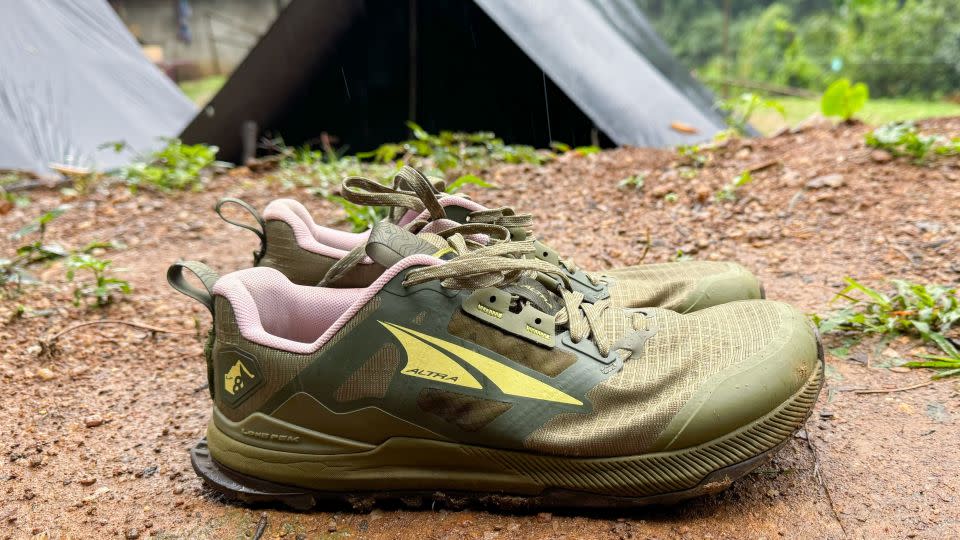
The Lone Peak is an icon in the trail running world, and the Altra Lone Peak 8 boasts many of the same great features as previous models, while also updating the lacing and footbed, and making the ripstop mesh upper a bit more durable. If you’ve been a fan of previous Lone Peak shoes, you’ll likely love the newly-released 8s.
But, if you’re seeking plush cushioning (like Altra’s Olympus 5, $170), an aggressive heel-to-toe drop (like Salomon’s Speedcross 6, $145), or a fully barefoot-style shoe (like Vivobarefoot, $170), you’ll want to look elsewhere. If waterproofness is important to you, then the Lone Peak All-Wthr Low 2s ($160) are a good pick, as are the La Sportiva Ultra Raptor II GTX ( $195), which comes in solid black.
Bottom line
The Altra Lone Peak 8, while not that different than the Lone Peak 7, is a fantastic hiker. They are roomy, rugged and extremely comfortable, allowing you to tackle tough trails and mountain scrambles alike. These are my go-to shoes for all sorts of hiking, from casual day hikes to multi-day treks, though, as I have a previous ankle and knee injury, I do prefer a proper boot if the descent is very rocky and scrambly. I also love the versatility of the shoe, which I regularly use for hiking, biking, traveling and walking around at home in New York City. Though the price is $10 cheaper than the Lone Peak 7s when they first came out, there’s not a tremendous difference between them. If you could do without the enhanced lacing system (or you simply prefer the colors offered in the 7), then the Lone Peak 7 is also a great pick, as they are now deeply discounted because they’re discontinued.
Note: The prices above reflect the retailers' listed price at the time of publication.
For more CNN news and newsletters create an account at CNN.com

